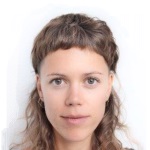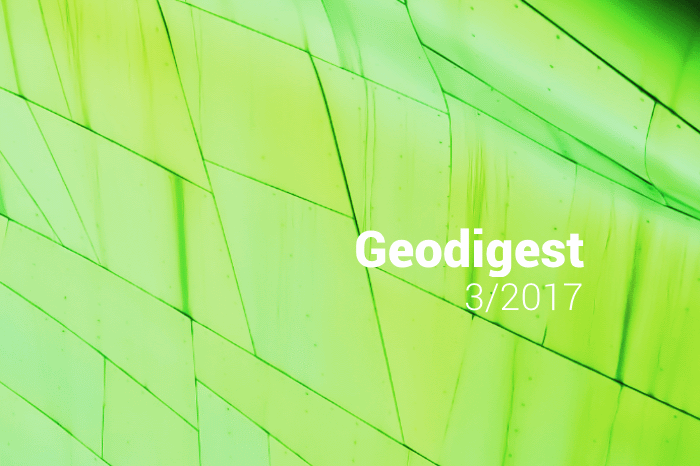
Коли мова йде про ГІС в Україні, то на думку спадає не так багато інформаційних ресурсів, з яких можна дізнатися про актуальні проекти та стан розвитку цієї галузі науки. Хоча більшість посібників для навчання та роботи ми все ще шукаємо на закордонних просторах Інтернету, існують дуже приємні приводи для зустрічі зацікавлених у геоматиці людей.
Вже п’ятий рік поспіль у Харкові відбувається ГІС-Форум, який є майданчиком для зустрічі всіх небайдужих.
У 2016 році, ГІС-Форум проходив з 15-го по 18-те березня, і на ньому зібралося більш ніж 150 людей. Харківський Національний Університет ім. В.Н. Каразіна знову став локацією для проведення ГІС-Форуму, на якому було зроблено 46 доповідей (як “вживу”, так і дистанційно), проведено 7 майстер-класів, 5 круглих столів, конкурс студентських ГІС-проектів, виставка геодезичного та картографічного обладнання − і це далеко не повний список активностей, реалізованих впродовж днів форуму.
ГІС-Форум було організовано кафедрою фізичної географії та картографії ХНУ ім. В.Н. Каразіна, у партнерстві з компанією Intetics та ТОВ ГІСІНФО. та. Доклади були розподілені на окремі секції “Виробництво”, “Наука” та “Освіта”, а їх тематики різнилися від чисто теоретичних презентацій нових продуктів програмного забезпечення та розповідей про проекти учасників форуму до дуже практичних порад, наприклад, щодо методик викладання ГІС студентам вузів.
ГІС-Форум став платформою для комунікації і співпраці між різними категоріями людей, чия діяльність пов’язана з геоматикою: науковці і дослідники, представники компаній, що працюють в сфері геоматики. Викладачі та студенти спеціальностей, де наразі використовують ГІС-технології, мали можливість висловитися та почути інших.
Організатори та учасники форуму погоджуються в тому, що ця подія є в першу чергу чудовим шансом для живого спілкування. Це місце зустрічі людей, яких об’єднує приналежність до ГІС, натхнення і завзятість, і які готові ділитися своїми знаннями з усіма охочими. Учасники відмічали чудові майстер-класи, де лідери галузей ділилися інсайтами та відповідали на питання. Та не менш плідним було спілкування під час круглих столів і в “кулуарах” форуму.
Фокус програми першого дня події був зроблений на використанні у виробництві застосунків, що базуються на ГІС та ДЗЗ. Спікери робили доповіді стосовно збору, створення та відображення просторових даних та картографічних матеріалів, використання даних ДЗЗ в агросекторі та інших галузях.
День другий був присвячений науці і також освіті. На честь цього дехто з учасників навіть символічно вдягнув футболку з Шелдоном Купером. 😉
Третього дня чимала кількість доповідей (хоча не всі) була присвячена використанню ГІС у прикладних викладацьких цілях.
Деякі доповіді
Доповіді проходили у трохи метушливій атмосфері великого ректорського нарадового залу. Увесь час туди-сюди заходили люди, а довжелезний стіл трохи розділяв приміщення на слухачів і доповідачів.
Олександр Бруй, що представляв на форумі Boundless Spatial, розповів про розроблений компанією набір відкритих інструментів OpenGeo Suite, компоненти якого здатні замінити застосунки, що використовують геопросторові технології на всіх платформах − мобільних, серверних та персональних комп’ютерах. Інженерами компанії також розроблене середовище для візуальної розробки інтерфейсу ГІС-застосунків за допомогою OpenLayers, тож люди з конкретними ідеями, але без навичок програмування, можуть створювати потрібні їм продукти.
Навігаційно-Геодезичний Центр презентував новий ультратехнологічний портативний прилад Zeno 20 від Leica, що об’єднує в собі купу можливостей, таких як тахеометрія, GNSS, лазерне сканування та інше. Будучи універсальним приладом для збору та обробки польових даних, один Zeno 20 може замінити декілька раніше незамінних приладів, і таким чином виглядає економічно привабливим. Цей невеличкий прилад вже здобув популярність у країнах Європи та Африки, а зараз є в наявності і в Україні.
Команда від Here Ukraine поділилась останніми новинами з головного офісу компанії в Берліні. Саме Here Maps додають дуже багато зусиль до розвитку і просування технології безпілотних автомобілів. Зокрема, слухачі дізналися, що в Європі компанія Here успішно співпрацює з установами, відповідальними за дороги в різних країнах світу, для актуального оновлення інформації про стан дорожнього покриття в навігаційній базі даних. На жаль, в Україні співпраця з Укравтодором ще не є злагодженою, але Here Ukraine продовжує прикладати зусилля у цьому напрямку.
Андрій Головін, що пройшов шлях від активіста-картографа OpenStreetMap до спеціаліста з даних у команді Mapbox, розповів, як функціонує проект суспільного картографування OpenStreetMap, і яким чином бажаючі можуть долучитися до процесу. Процес поліпшення та розширення найбільшого колективно створеного відкритого атласу нашої планети, вочевидь, захоплює − за декілька років внесення даних в OpenStreetMap він оцифрував фактично половину міських доріг та полігональних об’єктів міста Дніпропетровськ.
Хедлайнером третього дня програми стали представники славнозвісного госдепу Раффі Баліан та професор Дуглас Річардсон, що займаються впровадженням в Україні ГІС проекту Secondary cities. Про нього, сподіваємось, розповімо дещо пізніше. Але хочеться відмітити, що цей виступ та круглий стіл, йому присвячений, викликали чималий ажіотаж.
У Харківському Національному Аграрному Університеті ім. В.В. Докучаєва проводяться дослідження у сфері точного землеробства, про які відвідувачам ГІС-Форуму розповів завідувач кафедри геодезії, картографії та геоінформатики Андрій Ачасов. Використання даних аерофотозйомки цільових територій для моніторингу стану ґрунтового покрову полів та подальшою точковою корекцією необхідних параметрів може допомогти оптимізувати вартість аграрного виробництва, а також підвищити якість сільськогосподарської продукції.
Досвідом викладання геоінформатики поділився професор Сергій Костріков, що вже 25 років поспіль читає курс інформатики з основами геоінформатики студентам Харківського Національного Університету. У своїй практиці він фокусується на прикладній природі ГІС, щоб полегшити студентам розуміння предмету, а також намагається сформувати у майбутніх спеціалістів просторовий погляд на проекти та системи.
Щодо підвищення ефективності практичних занять з предметів, пов’язаних з геоінформатикою та дистанційним зондуванням, то ідеями для активізації навчального процесу поділився Олександр Третьяков, що також викладає у ХНУ ім. Каразіна. Він прагне робити нудні частини учбового матеріалу більш цікавими для студентів та мінімізувати автоматичне виконання вправ, використовуючи підходи, що потребують усвідомлення цього процесу.
Представник колективу 50° North Євген Матвійчук також був одним зі спікерів форуму і розповів про мрії та ідеї, що стали рушійною силою засновників геопросторового блогу. Окрім освітньої функції, редакція 50° North також хотіла б перетворити його на онлайн-осередок ГІС-комьюніті в Україні. Блог двомовний, щоб в перспективі він зміг стати тим ресурсом, який може освітлювати ситуацію у галузі ГІС в Україні для наших закордонних колег та всіх зацікавлених.
Майстер-класи
Хочеться звернути увагу, що майже усі МК цього року були пов’язані з відкритими ГІС. Наприклад, Віктор Олайя та Олександр Бруй, знані розробники QGIS, ділилися своїм досвідом. Андрій Головін, OpenStreetMap-ентузіаст, представник компанії Mapbox, знайомив охочих зі стилізацією даних ОСМ у Mapbox Studio.
Круглі столи
Під час форуму було проведено 5 круглих столів. Деколи це були надто великі скупчення людей, що не сприяло камерності самого поняття та не допомагало вести конструктивний діалог. В інших випадках розмови виявлялися дійсно продуктивними.
Заключним у програмі ГІС-Форуму став круглий стіл щодо сучасних проблем та задач ГІС-освіти. Об’єктивності в обговоренні цієї теми додавало те, що серед присутніх були і викладачі вузів, і потенціальні роботодавці, і студенти. Серед невирішених питань, пов’язаних з освітою, були названі: низький рівень комп’ютерногозабезпечення вузів, не оптимальні учбові плани, а також низька мотивація студентів, яка пов’язана з невизначеністю майбутнього працевлаштування. Форум був завершений на думці про зменшення пробілу між потребами роботодавців у галузі ГІС та навичками, що студенти отримують у вузах. І це, зрештою, цілком можливо − сьогодні студенти старших курсів, зацікавлені у продовженні роботи у напрямку геоматики, можуть отримати досвід роботи у цій сфері в українських компаніях під час промислової практики. Наприклад, представники компанії Here Ukraine анонсували, що відкриті до запитів студентів щодо проходження практики у них в офісі.
Як ми бачимо, проводити події для зустрічі і співпраці небайдужих до ГІС дуже корисно: навіть на такому локальномумасштабі озвучуються питання, проблеми, і шукаються їх вирішення. Бажаємо ГІС-Форуму подальшого росту та розширення, а також залучення широкого кола людей, які про геоматику ще не знають!












